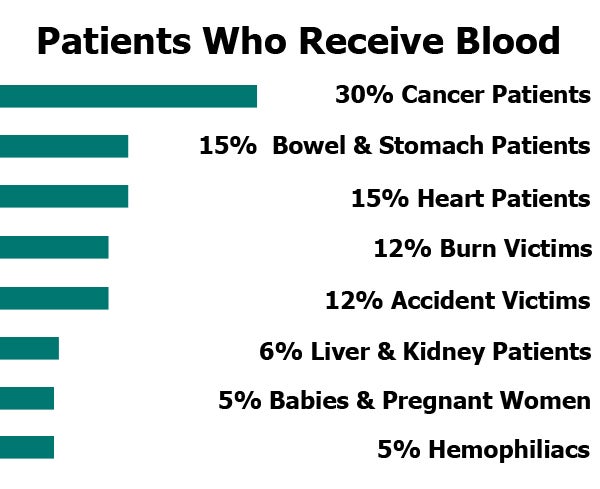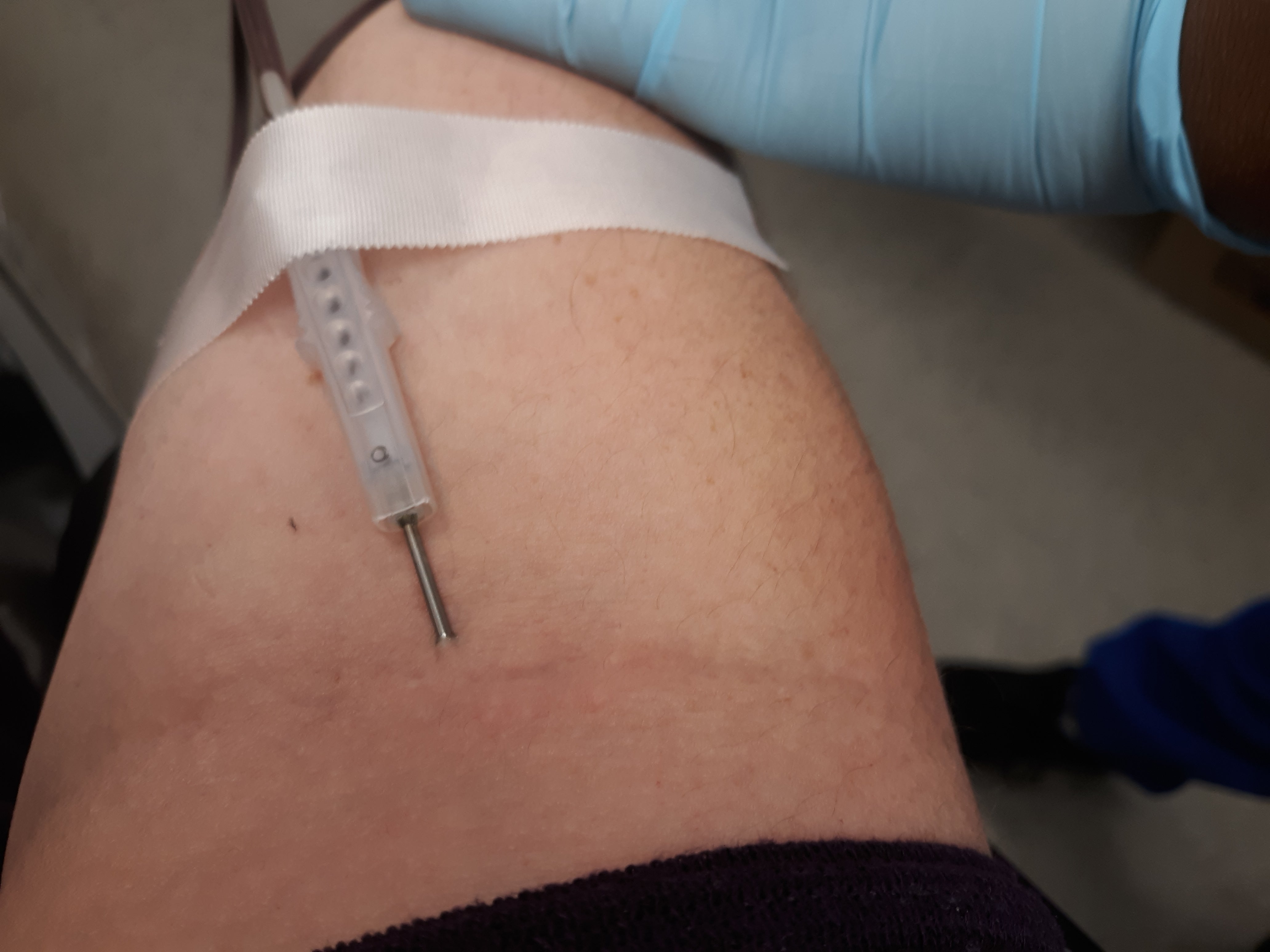Blood banks in need of donors
Published 6:21 am Wednesday, January 20, 2021
|
Getting your Trinity Audio player ready...
|
By Dawn Burleigh
Donating blood is a selfless decision. Blood donors may not know it, but they save lives every day.
According to the American Red Cross, someone in the United States needs blood every two seconds. Cancer patients, organ transplant recipients and accident victims are just some of the types of people who benefit from blood donations every day.
Blood banks are at critical levels for some blood types. Typically, the blood bank prefers to have at least a three-day supply.
“Yes, some blood types are at critical levels. We are regularly staying at just a half day supply of both O negative and O positive blood,” LifeShare Blood Center Account Manager Tiffany Ybarra, MLT (ASCP) said. “The other blood types are at about a two-day supply, so while not at the 3-day supply, we would like, at least those types are not critically low like O pos and O neg. Recently, we have had to import blood from Houston.”
Blood donors may recognize the vital role they play in patient care, but many may wonder if it’s safe to donate blood during the pandemic. According to the Centers for Disease Control and Prevention, it is safe for anyone who is well to donate blood. That even goes for people who are social distancing due to COVID-19. The CDC has recommended various safety measures to ensure the safety of donors and donation center volunteers and staff members. Such measures include spacing donor chairs at least six feet apart and encouraging donors to make donation appointments ahead of time. Appointments can ensure donors are not spending more time at the donation center than is absolutely necessary, reducing the likelihood that they have contact with someone who may have COVID-19 but not know it.
“The health and safety of our patients, donors and team members is very important. Our employees and our donors are screened for fever and all are required to wear masks,” Ybarra said. “We have increased our disinfecting processes, sanitizing every donor bed and other high touch surfaces thoroughly between blood donors. We limit the number of donors onboard a LifeShare bus at one time and encourage groups to host blood drives in a large room when possible so that physical distance is easier to maintain.
There are different types of blood donations, and making the right type of donation can ensure a contribution is as valuable as it can be.
The following is a rundown of the various types of blood donations:
Whole blood donation
“Whole blood” is the term used to describe the blood that flows through your veins. This blood contains red cells, white cells and platelets, suspended in plasma. A whole blood donation is the most flexible type of donation because it can be transfused in its original form or used to help multiple people after being separated into its specific components (i.e., red cells, plasma and platelets).
The donation itself does not take much time, though donors should expect to spend about an hour at the donation center, which includes their post-donation recovery time. All blood types make ideal whole blood donations.
“People who have had and recovered from COVID are welcome to donate. They just need to wait 28 days from their positive test result and be symptom free,” Ybarra said. “In addition, those who have had the COVID vaccine are eligible to give blood as well with no waiting period. Those with antibodies can give Convalescent Plasma, used to treat the most ill patients fighting COVID, either by a special plasma only procedure or a standard whole blood donation.”
Power red donation
A power red donation allows donors to donate two units of red blood cells during a single donation. But unlike a whole blood donation, donors who make a power red donation have their plasma and platelets returned to them during the donation process. A power red donation typically takes around 30 minutes longer than a whole blood donation, but the Red Cross notes that power red donors may feel more hydrated after donating than whole blood donors because they don’t lose the liquid portion of their blood during the donation process. Power red donations are typically given to trauma patients and newborns and may be administered during emergency transfusions during births.
“All blood types are needed. We encourage O and B donors to give red blood cells on our ALYX instrument, if possible,” Ybarra said.
Blood types that are ideal for power red donations include O positive, O negative, A negative, and B negative.
Platelet donation
Platelets are tiny cells in the blood that form clots and stop bleeding. Platelet donations take between 2.5 to three hours, and platelets are typically given to people fighting cancer, chronic disease and traumatic injuries. Platelet donations last just five days, so platelet donors are in high demand. During a platelet donation, platelets and some plasma are collected by an aspheresis machine, and red cells and most of the plasma is then returned to donors. Platelets are not collected at blood drives, and prospective platelet donors must visit Red Cross donation centers. People with A positive, A negative, B positive, O positive, AB positive, and AB negative blood types are ideal platelet donors.
AB elite plasma donation
AB plasma can be given to anyone regardless of their blood type. During an AB elite donation, plasma is collected and separated from other components in the blood. Red blood cells and platelets are then returned to donors. Donors with AB blood are ideal for AB elite plasma donations, which only take a few minutes more than a standard blood donation. Type AB plasma is the only universal type and can be given to patients of any blood type, making these donations especially valuable.
More information about blood donations can be found at www.redcrossblood.org.
The blood donation process generally follows these steps, according to LifeShare:
- Before giving blood, make sure that you meet the requirements, get a good night’s sleep, eat regular meals and drink plenty of fluids.
- After you present a photo ID and read the information sheet you will undergo a mini exam (temperature, blood pressure, heart rate, and iron level) and then provide confidential answers to health history questions.
- The donation takes place in a comfortable chair. Most donors feel a slight prick when the needle is inserted and nothing after that.
- After the donation, you should sit down and have a snack and beverage. If you experience any light-headedness let your donor technician know and lie down until you feel better. Do not use tobacco products for the next 30 minutes. Leave the arm bandage on and do not engage in strenuous activity or lift heavy objects for the next two to four hours. For the next 24 – 48 hours be sure to increase fluid intake.
To find where Blood Drive is near you, visit https://donor.lifeshare.org/donor/schedules/zip







